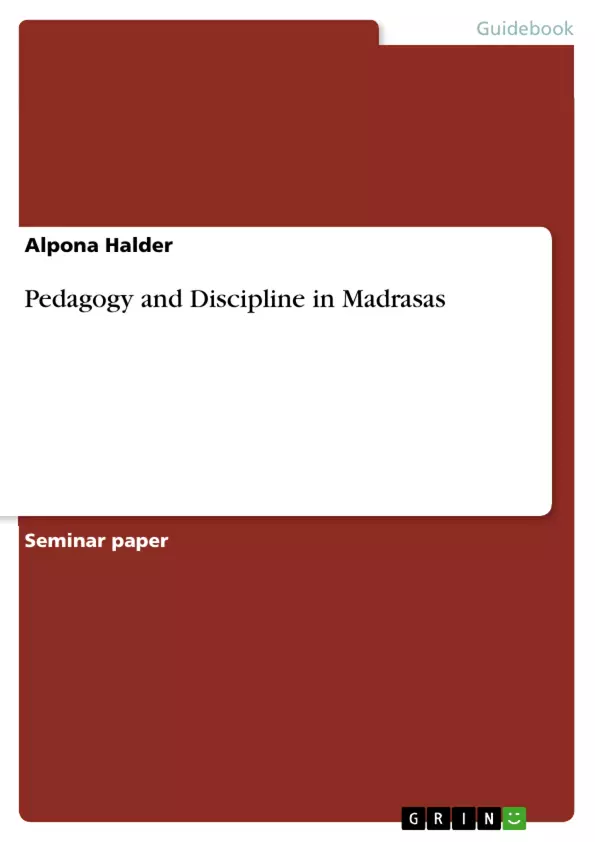The genesis of education in the Mosques dates back to the times of the Islamic prophet Mohammad. It was the centre for knowledge and solution for people’s problem in life. Over the years religious institutes for education started operating from inside these mosques and were named Madrasa. These Islamic educational institutes play a crucial role for the people of the Muslim community. Madrasas are now considered to be supplementary schools for this specific community. Children are sent to Madrasas from an early age to learn the religious scripture and identify their roots and culture. Changing times have focussed on the real applicability of Madrasa education. Insider elaboration of the facts of Madrasa education is undoubtedly questionable. Out dated pedagogy and corporal punishment for behaviour modification is a daily routine which is seriously harming the children. These children face an uncertain future and are deprived from quality education. Children from poor family attending madrasas for free education end with very little knowledge about secular subjects.
Inhaltsverzeichnis (Table of Contents)
- INTRODUCTION
- CURRICULUM AND EDUCATION IN MADRASAS
- QUESTIONS FOR CURRICULUM DESIGNED BY DILLON (2009)
Zielsetzung und Themenschwerpunkte (Objectives and Key Themes)
This essay examines the pedagogical practices and discipline employed in Madrasas, exploring their impact on the education and development of children. It investigates the curriculum's content and its influence on young minds, focusing on the role of Ulemas (Islamic clerical teachers) and their teachings.
- The influence of traditional Islamic education and the Ulemas on Madrasa pedagogy
- The debate surrounding the quality and effectiveness of Madrasa education in a modern context
- The use of corporal punishment in Madrasas and its ethical implications
- The impact of Madrasas on children's development and their ability to thrive in a secular society
- The role of curriculum design in shaping the learning experience in Madrasas
Zusammenfassung der Kapitel (Chapter Summaries)
The introduction provides an overview of Madrasas as institutions of Islamic education, highlighting their historical significance and their role in Muslim communities. It discusses the different interpretations of the term "Madrasa" and explores the concerns surrounding the reputation of some Madrasas as promoting fundamentalism and extremism.
The chapter on "Curriculum and Education in Madrasas" delves into the pedagogical practices and beliefs prevalent in these institutions. It examines the influence of Ulemas on the curriculum and the concerns regarding the quality of education provided. The chapter also discusses the importance of curriculum design and its impact on learning outcomes.
The final section presents a table summarizing the key questions for curriculum design developed by Dillon (2009). This table provides a framework for analyzing the curriculum's nature, elements, and practice in relation to the educational objectives and the learning experience.
Schlüsselwörter (Keywords)
Madrasas, Islamic education, pedagogical practices, discipline, curriculum, Ulemas, corporal punishment, fundamentalism, extremism, quality of education, curriculum design, Dillon's framework.
- Citar trabajo
- Alpona Halder (Autor), 2013, Pedagogy and Discipline in Madrasas, Múnich, GRIN Verlag, https://www.grin.com/document/295333



